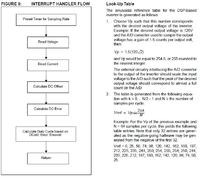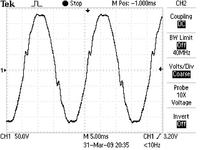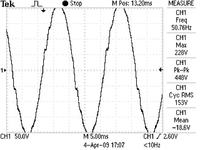umery2k75
Advanced Member level 1

magic sine pwm
In every article,I see regarding Sine wave Inverters, UPS.What they basically all do is to do variation of duty cycle in the PWM signal to provide a DC voltage across the load in a specific pattern, that appears to the load as an AC signal!
But why? Why it happens, how come the complex switching waveform appear as AC wave after passing through filter.Is this because I used Sine wave as a reference in generating PWM.If this is so, then what if I used an audio song as a reference signal beside Sine wave. Take an inverter of 12VDC to 220VAC. Will I be getting a song where it's Peak to Peak is within 622.16V. Vrms=220V, so Vpp = 2*1.414*220=622.16V. Isn't that all Modulation and Demodulation?
In terms of communication I can understand, low frequency like 50Hz can be modulated with a FM frequency and then restore back by removing the carrier and getting back the desired signal of interest. I am trying reading more about this thing from the internet, because I don't have books on these topics.
I am writing these points, they are useful insight.
In every article,I see regarding Sine wave Inverters, UPS.What they basically all do is to do variation of duty cycle in the PWM signal to provide a DC voltage across the load in a specific pattern, that appears to the load as an AC signal!
But why? Why it happens, how come the complex switching waveform appear as AC wave after passing through filter.Is this because I used Sine wave as a reference in generating PWM.If this is so, then what if I used an audio song as a reference signal beside Sine wave. Take an inverter of 12VDC to 220VAC. Will I be getting a song where it's Peak to Peak is within 622.16V. Vrms=220V, so Vpp = 2*1.414*220=622.16V. Isn't that all Modulation and Demodulation?
In terms of communication I can understand, low frequency like 50Hz can be modulated with a FM frequency and then restore back by removing the carrier and getting back the desired signal of interest. I am trying reading more about this thing from the internet, because I don't have books on these topics.
I am writing these points, they are useful insight.
1)In square wave inverters, maximum output voltage is achievable.
2)However, there is no control in harmonics and output voltage magnitude, that is the harmonics are always at 3,5,7,etc times the fundamental frequency.
3)Hence the cut-off frequency of the low pass filter is some what fixed. The filter size is dictated by VA ratings of the inverter.
4)To reduce filter size, the PWM switching schemce can be utilized.
5)In this techinque, the harmonics are pushed to higher frequencies. Thus the cut-off frequency of filter is increased. Hence filter components(i.e L & C ) sizes are reduced.
6)The trade off this flexibility is complexity in the switching waveforms.





